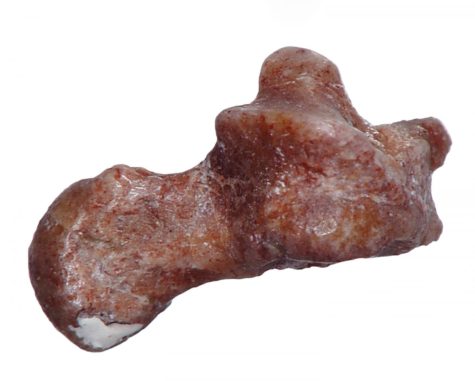
This tiny ankle bone belonged to one of the earliest members of the primate family tree. The 52-million-year-old fossil suggests that the first primates were expert leapers. Discovered more than 30 years ago by paleontologist Marc Godinot, the fossil is now housed at the Muséum National d'Histoire Naturelle in Paris. (Photo by Douglas Boyer, Duke University)
DURHAM, N. C. — In a new study debunking previous theories of mobility in our earliest ancestors, paleontologists determined great leaping ability in the first primate species after uncovering an ancient fossilized ankle bone.
The 52 million-year-old fossil predates modern humans by eons, but it is believed to be from a chipmunk-sized primate predecessor called Donrussellia provincialis, an ancestor of modern lemurs.

When Duke assistant professor Doug Boyer and his team analyzed scans of the quarter-inch bone, found in southeastern France, they compared it to other animals, matching their three-dimensional shapes using computer algorithms. They found that Donrussellia's ankle was more similar to nonprimate species like treeshrews than to other primates.
Contrary to previous theories about early primates, which suggested that they scurried along small branches, deliberately scanning for and picking up food like insects, flowers, and fruits, Donrussellia's ankle structure suggests that these distant human ancestors jumped through the forest, tree to tree.
The researchers posited that early primates evolved the ability to acrobatically navigate tree cover before developing the ability to grab and cling to slender branches later.
“Being able to jump from one tree to another might have been important, especially if there were ground predators around waiting to snag them,” explains Boyer in a Duke media release.
The full study was published in the Journal of Human Evolution.











1 Comment